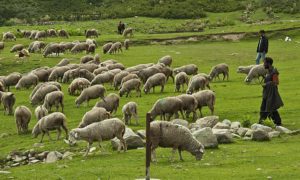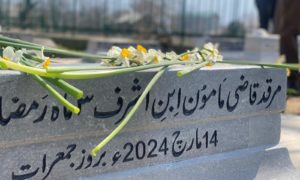A 42-year-old French journalist Paul Comiti was arrested by Jammu and Kashmir Police on December 10, 2017, while preparing to film in Kashmir.
According to the police, they had ‘no issues with him performing his professional duties’. He was instead arrested on charges of visa violation. He was charged with disrupting public order, for being present at a protest; then accused of faking his passport and was finally told that he had violated visa norms.
After the Embassy’s intervention, he was released on bail, two days later, on Tuesday. Everything happened within two days, and Comiti got out on bail.
In his 25 years covering conflicts across Iraq, Afghanistan, Congo, Israel and Palestine, Paul claimed he had “never felt like this way before”.
ALSO READ: #JournalismIsNotACrime: List of Journalists killed and attacked in Kashmir proves otherwise
In a report by Nidhi Suresh for Newslaundry, Paul is quoted as saying, “I almost felt like I was in North Korea. It was as if they had so much to hide that they just do not want any international media here.”
“When I was taken to the police station there was no professional process. Most of them were confused of what to do. There was only one computer and they couldn’t even find a pen. In short, they couldn’t even file a proper complaint,” said the French journalist.
Paul was first summoned to the police station via a telephone call to his local stringer. According to the stringer, he received multiple calls from the police and they decided to immediately see what the matter was. Paul and the stringer visited the police station where Paul was questioned, and later detained.
Immediately after the detention, many international bodies of journalists, including the International Federation of Journalists (IFJ), issued a statement demanding Paul’s release.
The stringer was not harassed, albeit, left considerably scared, and feeling vulnerable, like Kamran Yousuf, a journalist from Kashmir and a freelancer like Paul’s stringer.
Kamran Yousuf, is in custody from the past 3 months and fourteen days. The 21-year-old photojournalist from district Pulwama continues to stay in jail for performing his professional duties without violating any laws.
Kamran, in a similar Modus Operandi like that in Paul’s case, was called to the police station, where he was detained and then later handed over to the National Investigating Agency (NIA), a central Indian government agency notorious for being a pressure wing of the government, which has been accused of detaining people in Kashmir at will.
Kamran was summoned to the local police station on September 4 and handed over to the NIA the next day after which he was flown to New Delhi. On Saturday, Kamran’s case was discussed in the court in New Delhi.
Sources told Free Press Kashmir that the crux of National Investigating Agency’s (NIA) allegations was that he had been present at the spots where incidents of stone pelting had taken place. Kamran’s attorney countered all the allegations. However, the NIA is going to offer a ‘rebuttal’ on January 3 and after that, the bail order might pass.
Speaking to Free Press Kashmir on the condition of anonymity, a human rights lawyer from New Delhi, familiar with Kamran’s case, says that he has been ‘kept in custody illegally’.
According to the source, Kamran’s lawyer while countering NIA’s first allegation, argued that Kamran was in fact present at the places where stone pelting took place, as a journalist, and had submitted and pitched those photographs to organisation he freelanced for.
In a ninety minute argument, the defense, as per the court source, had presented more than hundred pictures taken by Kamran, on record before the court, to show that he was not only covering the stone pelting events, but also events including army, police and state government events and visits of foreign delegates. For some of these events he had been issued a ‘media pass’ as well.
“It eventually shows that he is a bona fide journalist. His body of work is available for everyone to see. He has been working with local English daily Greater Kashmir, Hyderabad-based news channel Munsif TV and Chandigarh-based channel Gulistan News,” court sources said (name withheld).
Painting a picture of how Kamran was defended in the court, the source further said, “NIA says that he is in ‘guise of a journalist’. How is he in a guise when he was covering all kinds of incidents as any professional journalist would? Had he been only covering one side and taking only certain pictures, even then it would merit being called biased and not be treated as a criminal. His pictures, one after the other, were produced before the court. They show that he is covering everything: from the visit of the German Ambassador, to Kashmiri Pandits, to a person’s funeral, to women using Kangri at some state government event. So, it is clear that he is not in a ‘guise of a journalist’.”
Siding with Kamran, the source says that in Kashmir, protests are an everyday thing, and covering them is part of the job of a photo journalist.
Kamran’s defence also raised a point saying that even if it is agreed upon hypothetically (which they are not ready for) that he was present at the spots where stone pelting was taking place and was involved, it does not fall under any offence in Unlawful Activities Prevention Act (UAPA). By normal course the police should have acted, instead of the NIA.
“Even the UAPA offence cannot be made out from his case,” shared the sources.
Quoting the French Journalist’s case, the sources within the legal fraternity said, “A French journalist was recently detained. You have seen his statement. You see, because he was a French journalist, there was so much of hue and cry, the embassy intervened and asked to release him. Kamran is a young Kashmiri. He is being unnecessarily kept in such a manner and no one can speak for the abuse of his human and professional rights. And if the other stone pelters have been given amnesty by the government, how can NIA be investigating a case against him?”
They also questioned the investigation done by the NIA.
“NIA comes in when it is a very serious offence of some kind. It’s not like your regular state police. Why is his case being separated from everyone else’s? There is no justification on record etc. It’s discriminatory, and plain harassment,” they said.
“The defence has shown everything in court. Clearly, there is nothing against Kamran. The court will take the decision and its not in the hands of the defence after that,” the sources said adding that Kamran has been denying all the allegations since day one and at present, he is in Rohini Jail, New Delhi.
ALSO READ:Abuse of Kashmiri Prisoners in Jails: Who said what
The NIA’s case, as per the source, also fails to maintain facts about Kamran’s detention date and manner, where they say that his brother was called, when Kamran doesn’t have a brother.
What separates Kamran’s case from Paul’s, more than how the authorities were able to curb his rights, is how the fraternity responded. In Paul’s case Reporters Without Borders, Committee to Protect Journalists, International Federation of Journalists issues statements, in addition to his government and channel owning him and condemned his arrest.
In Kamran’s case however, even though CPJ issued a statement, the media organisation Greater Kashmir for which he regularly contributed, is alleged to have removed his credit from his photos on their website, while retaining the photos.
There were groups of journalists who protested in individual capacity, in the safety of the press enclave, but the organisations pretended as if it didn’t happen.
The case further exposes the vulnerability of not just local stingers and journalists on the field, but even the media organisations operating from the region.








